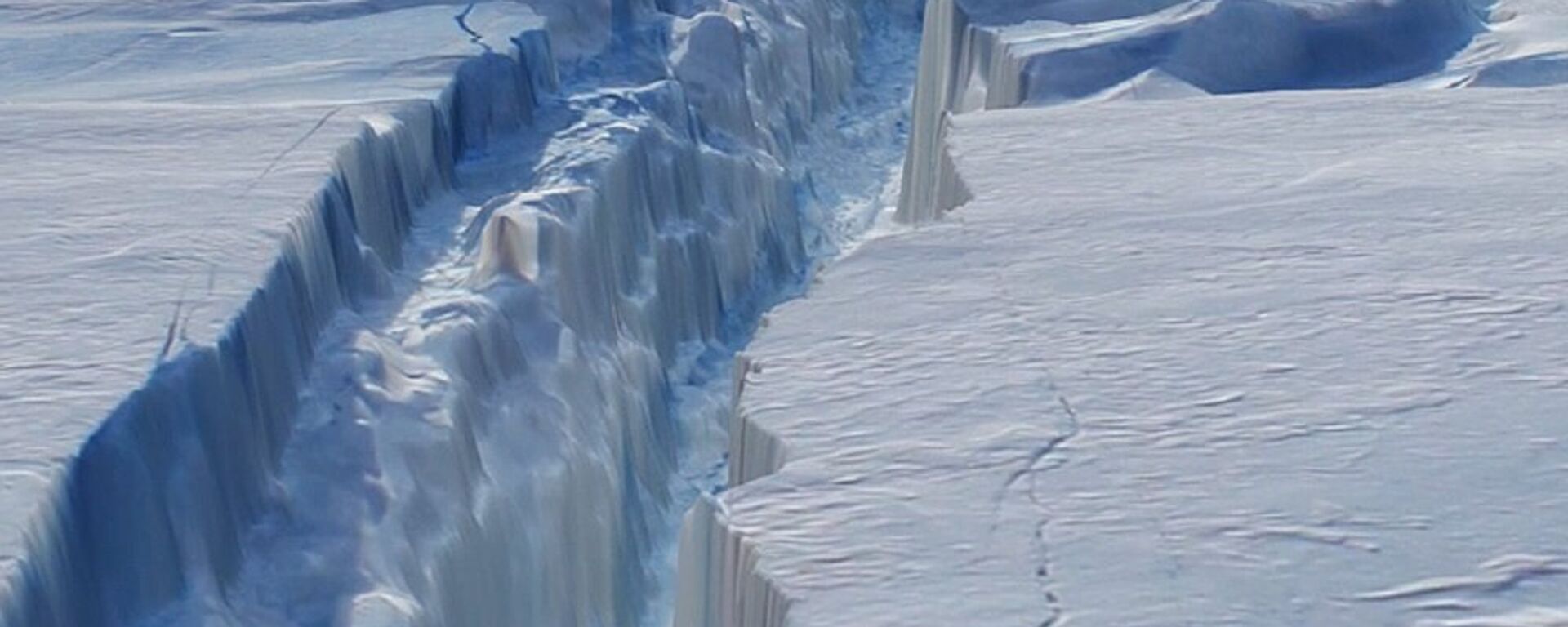https://sputnikglobe.com/20220203/worlds-largest-island-loses-enough-melting-ice-over-20-years-to-submerge-us-danish-study-finds-1092704288.html
World's Largest Island Loses Enough Melting Ice Over 20 Years to Submerge US, Danish Study Finds
World's Largest Island Loses Enough Melting Ice Over 20 Years to Submerge US, Danish Study Finds
Sputnik International
Since 2002, Greenland's ice sheet has been estimated to have lost 4.7 trillion tonnes of ice, contributing 1.2 centimetres to the rise in sea levels. 03.02.2022, Sputnik International
2022-02-03T05:17+0000
2022-02-03T05:17+0000
2022-02-03T05:17+0000
scandinavia
newsfeed
europe
greenland
arctic
ice
https://cdn1.img.sputnikglobe.com/img/07e4/0c/09/1081407656_0:318:3073:2047_1920x0_80_0_0_486434edd05b571d9142ce4873250b45.jpg
Over the past 20 years, Greenland's immense ice sheet has lost enough ice to submerge the entire United States in half a metre of water, according to a recent study performed by Danish researchers.Since the measurements began in 2002, the Greenland ice sheet has lost about 4,700 billion tonnes of ice, according to Polar Portal, a joint project involving several Danish Arctic research institutes.This immense amount of water has also contributed 1.2 centimetres to the rise in sea water levels, the monitoring project also said.The findings are largely based on satellite imagery from the US-German Gravity Recovery and Climate Experiment (GRACE) programme, which showed the ice melt to be most drastic at the coastline of the vast Arctic territory, at the very edges of the ice sheet.In these marginal zones, “independent observations also indicate that the ice is thinning, that the glacier fronts are retreating in fjords and on land, and that there is a greater degree of melting from the surface of the ice”, the website said, stressing that the west coast of Greenland is particularly affected.The climate is warming faster in the Arctic than anywhere else on the planet, and melting ice from Greenland is now the main factor in the rise in the Earth’s oceans, according to NASA. The US agency estimated that Greenland's glaciers are now retreating six to seven times faster than they were 25 years ago.Furthermore, the Greenland ice sheet contains enough water to raise the oceans by more than seven metres, whereas the ice sheet in Antarctica contains enough for a rise of almost 50 metres.The Arctic sea ice cover, despite shrinking dramatically, has by contrast little to no effect on sea levels.Located between the Arctic and Atlantic oceans, east of the Canadian Arctic Archipelago, sparsely-populated Greenland is the world's largest island, and one of the three constituent countries of the Danish Realm alongside Denmark proper and the Faroe Islands.
https://sputnikglobe.com/20211214/antarctic-ice-shelf-holding-the-doomsday-glacier-could-shatter-within-five-years-scientists-warn-1091518952.html
scandinavia
greenland
Sputnik International
feedback@sputniknews.com
+74956456601
MIA „Rossiya Segodnya“
2022
News
en_EN
Sputnik International
feedback@sputniknews.com
+74956456601
MIA „Rossiya Segodnya“
Sputnik International
feedback@sputniknews.com
+74956456601
MIA „Rossiya Segodnya“
scandinavia, newsfeed, europe, greenland, arctic, ice
scandinavia, newsfeed, europe, greenland, arctic, ice
World's Largest Island Loses Enough Melting Ice Over 20 Years to Submerge US, Danish Study Finds
Since 2002, Greenland's ice sheet has been estimated to have lost 4.7 trillion tonnes of ice, contributing 1.2 centimetres to the rise in sea levels.
Over the past 20 years, Greenland's immense ice sheet has lost enough ice to submerge the entire United States in half a metre of water, according to a recent study performed by Danish researchers.
Since the measurements began in 2002, the Greenland ice sheet has lost about 4,700 billion tonnes of ice,
according to Polar Portal, a joint project involving several Danish Arctic research institutes.
This immense amount of water has also contributed 1.2 centimetres to the rise in sea water levels, the monitoring project also said.
The findings are largely based on satellite imagery from the US-German Gravity Recovery and Climate Experiment (GRACE) programme, which showed the ice melt to be most drastic at the coastline of the vast Arctic territory, at the very edges of the ice sheet.
In these marginal zones, “independent observations also indicate that the ice is thinning, that the glacier fronts are retreating in fjords and on land, and that there is a greater degree of melting from the surface of the ice”, the website said, stressing that the west coast of Greenland is particularly affected.
The climate is warming faster in the Arctic than anywhere else on the planet, and melting ice from Greenland is now the main factor in the rise in the Earth’s oceans, according to NASA. The US agency estimated that Greenland's glaciers are now retreating six to seven times faster than they were 25 years ago.
Furthermore, the Greenland ice sheet contains enough water to raise the oceans by more than seven metres, whereas the ice sheet in Antarctica contains enough for a rise of almost 50 metres.

14 December 2021, 16:28 GMT
The Arctic sea ice cover, despite shrinking dramatically, has by contrast little to no effect on sea levels.
Located between the Arctic and Atlantic oceans, east of the Canadian Arctic Archipelago, sparsely-populated Greenland is the world's largest island, and one of the three constituent countries of the Danish Realm alongside Denmark proper and the Faroe Islands.


